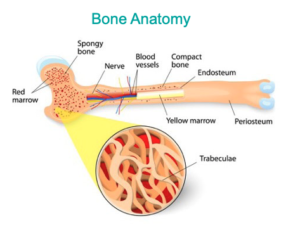Tracking a Silent Transformation: How Two Genes May Help Us Better Understand and Treat MDSTracking a Silent Transformation: How Two Genes May Help Us Better Understand and Treat MDS
Myelodysplastic syndrome (MDS) is a group of bone marrow disorders that can eventually turn into acute myeloid leukemia (AML), a fast-growing and dangerous blood cancer. While some treatments exist, most patients either don’t respond or relapse over time. New research suggests that part of the problem may lie in mesenchymal stem cells (MSCs)—the supporting cells in the bone marrow—and two genes in particular may hold the key to predicting or even treating the disease.
What The Study Looked At
Researchers used publicly available genetic data and samples from patients to investigate what’s happening inside MSCs as MDS progresses. They specifically wanted to find genes that consistently change during the transformation from healthy cells to MDS and eventually AML.
Through a series of genetic and laboratory tests, they focused in on two genes: HOXB3 and HOXB7.
Key Discoveries
-
Normal vs. Diseased Stem Cells Show Big Differences
MSCs from MDS patients were far more genetically diverse than those from healthy people. They showed major differences in how they behave and which biological processes are active—especially those related to cell growth, bone development, and inflammation. -
HOXB3 and HOXB7 Are Upregulated in MDS
These two genes were consistently more active in MSCs from MDS patients and especially in those that had transformed into AML. This was confirmed across multiple genetic datasets and in laboratory tests. -
Blocking HOXB3 and HOXB7 Improved Cell Function
When researchers used targeted genetic tools to reduce the activity of HOXB3 and HOXB7, the MSCs began to behave more like healthy ones. Specifically:-
They multiplied more quickly
-
They were less likely to die
-
They showed better ability to differentiate into fat and bone cells
-
Most importantly, they better supported blood-forming stem cells (HSCs), which is critical for normal blood function.
-
-
Better Prognostic Indicators
MDS patients with higher levels of HOXB3 and HOXB7 tended to have poorer survival rates, suggesting these genes could be used as biomarkers for prognosis. -
Strong Links to Other Known Disease Genes
HOXB3 and HOXB7 also showed strong connections to other genes already known to be important in MDS, such as TP53, DNMT3A, and RUNX1. This suggests they may be part of a broader network that drives the disease.
Why This Matters
This research is significant because it:
-
Shifts focus from blood cells to their environment. Instead of only targeting abnormal blood cells, we may also need to fix the “soil” (the MSCs) they grow in.
-
Identifies new targets for treatment. HOXB3 and HOXB7 could be used to guide new therapies that either delay progression or improve bone marrow function.
-
Helps refine diagnosis and prognosis. These genes might one day help doctors classify patients more precisely and personalize their treatment.
Want to learn more? Check this out!: https://bmccancer.biomedcentral.com/articles/10.1186/s12885-024-11859-w


